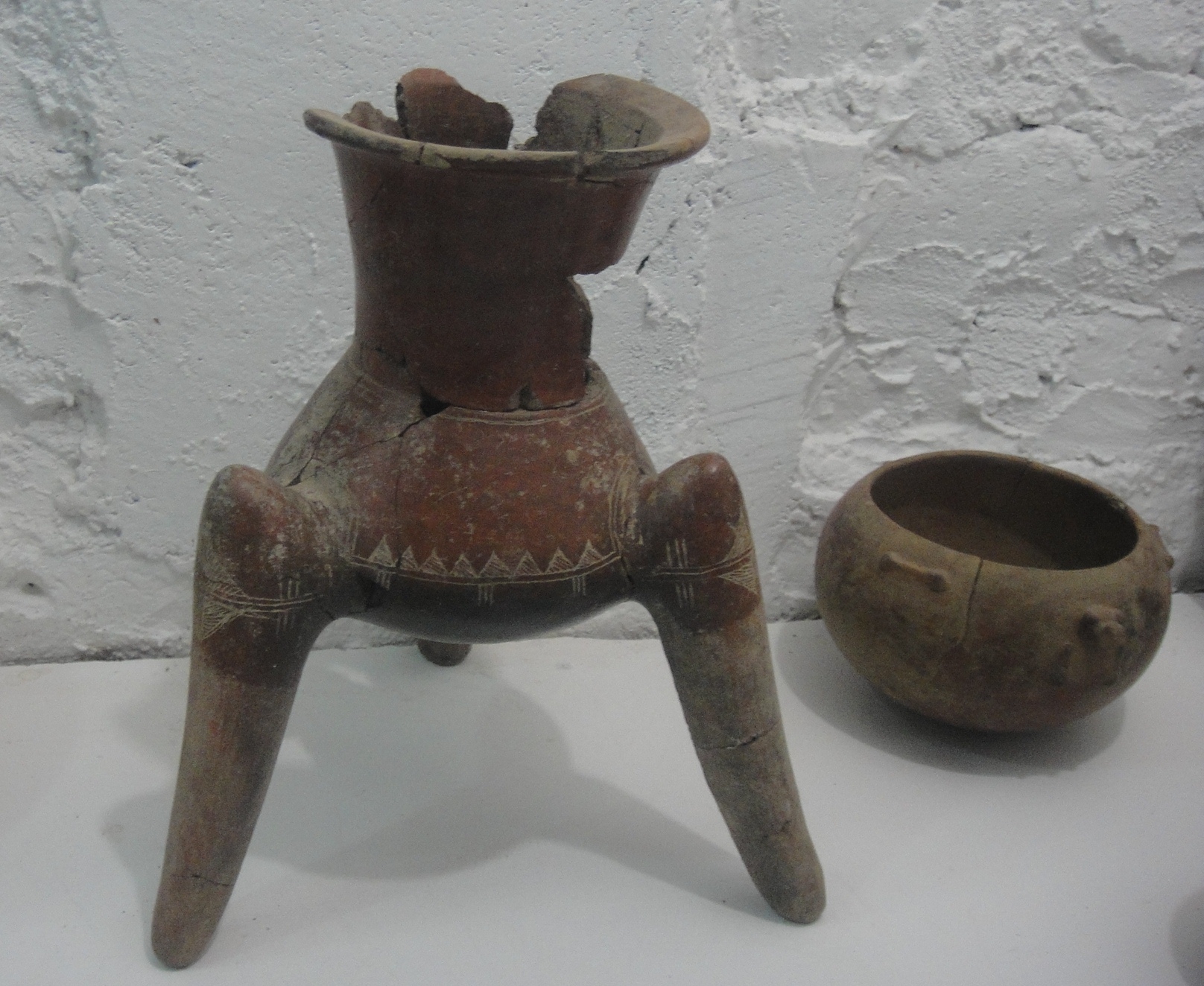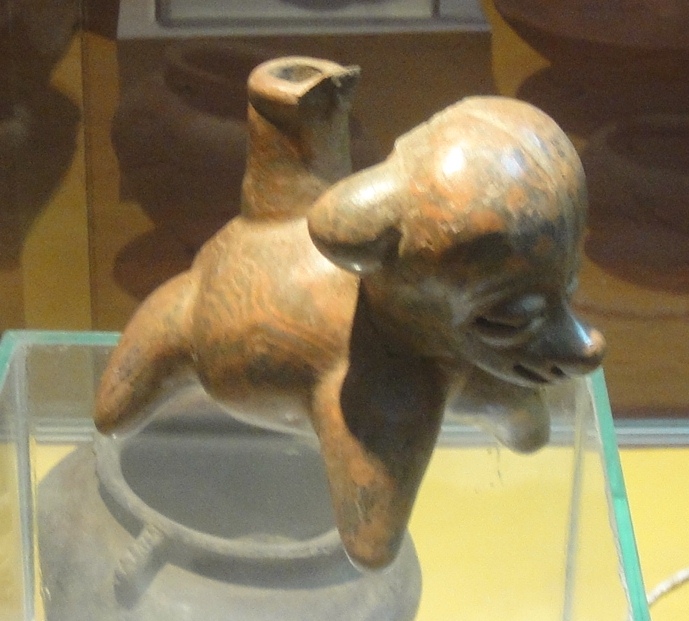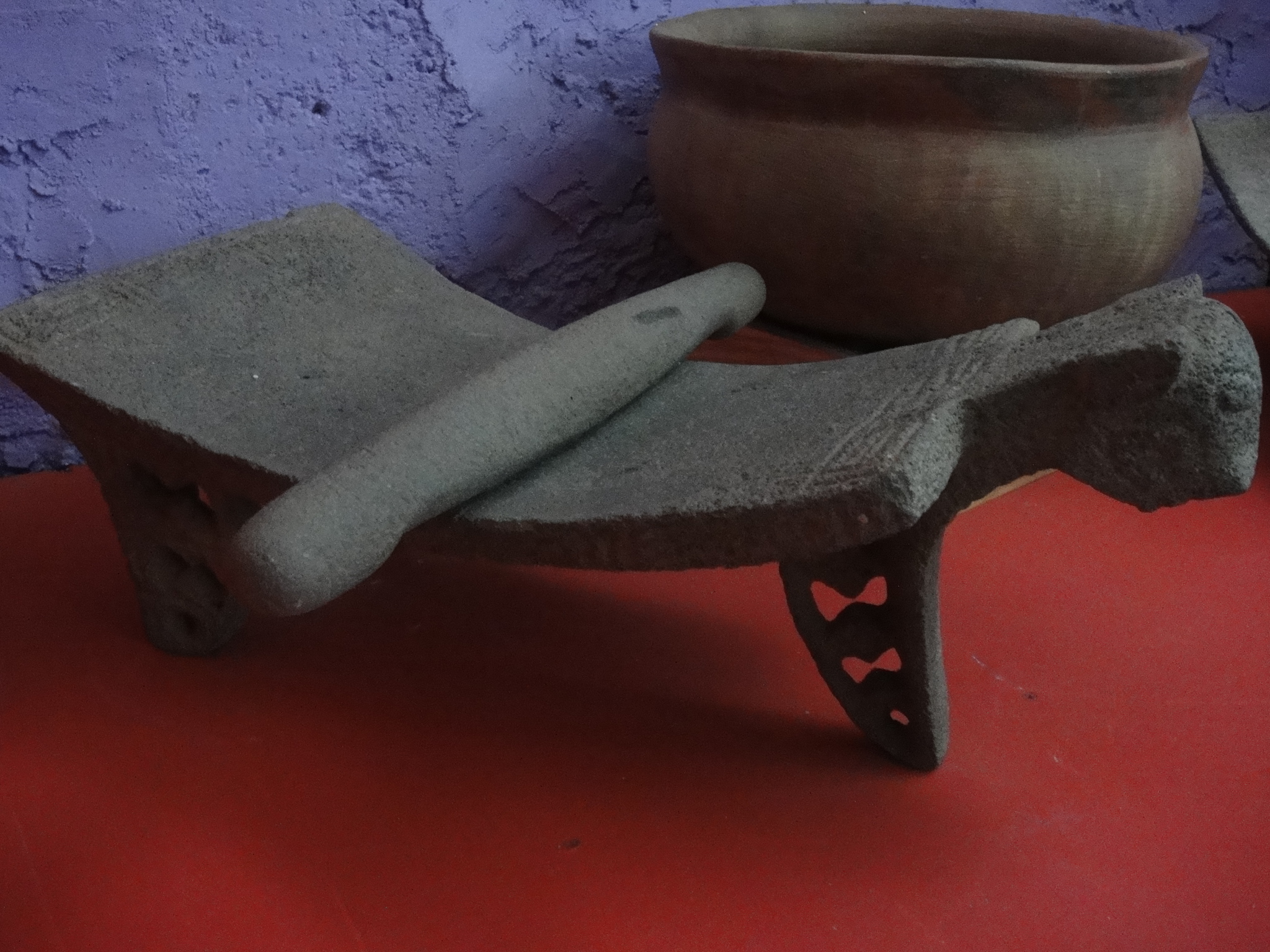El Ceibo Museums on:
[Wikipedia]
[Google]
[Amazon]
 El Ceibo is a museum in the
El Ceibo is a museum in the
 The outer courtyard of the museum displays 16 petroglyphs specimens, found in the area, 13 of which were found in the Maderas volcano, two on the museum grounds owned by Moses Ghitis and 1 is of unknown origin.
The island has many petroglyphs some dated as early as 300 BCE.
The outer courtyard of the museum displays 16 petroglyphs specimens, found in the area, 13 of which were found in the Maderas volcano, two on the museum grounds owned by Moses Ghitis and 1 is of unknown origin.
The island has many petroglyphs some dated as early as 300 BCE.




 *Mallets
*Flint Stone and obsidian Arrow tips and spearheads
*Farming tools
*Kitchen utensils
*Weighs for fishing nets
*Petroglyphs
*Grinding stones or
*Mallets
*Flint Stone and obsidian Arrow tips and spearheads
*Farming tools
*Kitchen utensils
*Weighs for fishing nets
*Petroglyphs
*Grinding stones or
 During this period begins to develop bi-chrome ceramics, Slipped-Incised and monochrome.
During this period begins to develop bi-chrome ceramics, Slipped-Incised and monochrome.
 This period already manufactures ancient polychrome ceramics, tri-chrome ceramic: red, black and beige.
This period already manufactures ancient polychrome ceramics, tri-chrome ceramic: red, black and beige.
 The museum and its Board of Directors recognize the following institutions that in some fashion have supported the important Museum Mission:
*Nicaraguan Culture Minister.
*Nicaraguan Tourism Institute.
*ETEA FOUNDATION, for development and cooperation, from Rivas.
The museum and its Board of Directors recognize the following institutions that in some fashion have supported the important Museum Mission:
*Nicaraguan Culture Minister.
*Nicaraguan Tourism Institute.
*ETEA FOUNDATION, for development and cooperation, from Rivas.
Ometepe Island Tourist Information (English, Spanish, Portuguese, and other languages)NicaTour Información turística (Spanish)
* ttp://ometepeislandinfo.com/PhotoGallery Ometepe Images
 El Ceibo is a museum in the
El Ceibo is a museum in the Ometepe
Ometepe is an island formed by two volcanoes rising out of Lake Nicaragua in the Republic of Nicaragua. Its name derives from the Nahuatl words ''ome'' (two) and ''tepetl'' (mountain), meaning "two mountains". It is the largest island in Lake Nic ...
island in what once were the tobacco farm “Tel Aviv” kilns, known by its former name “El Refugio”, in the community of Sacramento, 10 kilometers from Moyogalpa in Lake Cocibolca or Lake Nicaragua
Lake Nicaragua or Cocibolca or Granada ( es, Lago de Nicaragua, , or ) is a freshwater lake in Nicaragua. Of tectonic origin and with an area of , it is the largest lake in Central America, the 19th largest lake in the world (by area) and the t ...
administratively Ometepe Island belongs to the Rivas Department
Rivas () is a department of the Republic of Nicaragua. It covers an area of 2,162 km2 and has a population of 183,611 (2021 estimate). The department's capital is the city of Rivas.
Overview
Rivas is known for its fertile soil and beautif ...
. The name of the island derives from the Nahuatl: ōme 'two' and tepētl 'mountain (s),' since it is almost entirely composed of two volcanic
A volcano is a rupture in the crust of a planetary-mass object, such as Earth, that allows hot lava, volcanic ash, and gases to escape from a magma chamber below the surface.
On Earth, volcanoes are most often found where tectonic plates a ...
cones: Concepción (volcano)
Concepción is one of two volcanoes (along with Maderas) that form the island of Ometepe, which is situated in Lake Nicaragua in Nicaragua, Central America.
Concepción is an active stratovolcano that forms the northwest part of the Isla de Ome ...
and Maderas volcano.
Access to the museum is free to island residents and has an entrance fee of US$10 for foreign tourists to visit both museums and US$6 for domestic visitors.
The museum requires multilateral support to increase the exhibition area as well as scientific research on many pieces, to enhance information about the articles and to support scientific studies of the important archaeological area.
Due to the absence of outside interest, its own privately generated revenue is insufficient for its continued maintenance and operation into the distant future.
Museum history
The museum has two specific sections in two separate buildings; one is the Nicaraguan Numismatics, and another about pre-Hispanic archaeology of the area. The archaeology exhibition area has six exhibition halls over 200 square meters, a two-storey exhibition, the only one equipped with air conditioning to preserve the archaeological exhibits. The museum was founded in 2007 by Moises David Ghitis Rivera, a Nicaraguan philanthropist, on his agricultural and cattle farm on the island of Ometepe. It is the only private pre-Hispanic museum in the island of Ometepe, with a collection of more than 1500 archaeological pieces, which are on permanent display.Pre-Hispanic Archaeology Museum
On the first floor of the museum is the Ceramic Hall, displaying urns,metate
A metate (or mealing stone) is a type or variety of quern, a ground stone tool used for processing grain and seeds. In traditional Mesoamerican cultures, metates are typically used by women who would grind nixtamalized maize and other organic ...
s (grindstones) and stone tools.
On the second floor of the museum there is the women representation, the Pottery Hall, varieties and body ornaments room; the 1,500 pieces on display there have been found throughout the island by different farmers, and others were held privately as families heritage which was donated to the museum.
Petroglyphs
Ancient native tomb
Upon entering the museum, in the First Hall, there is a display of the recreation of a pre-Hispanic tomb; it was found and studied 15 years ago by Ghitis Rivera, 700 meters from the museum now. During the recovery process, it was mapped identifying location of human remains and the artifacts contained. The pre-Hispanic tomb was reconstructed within the museum; it contains teeth, bones placed in a ceramic vase, a jade pendant, an animal teeth necklace, an eagle head tripod and a goldshaman
Shamanism is a religious practice that involves a practitioner (shaman) interacting with what they believe to be a spirit world through altered states of consciousness, such as trance. The goal of this is usually to direct spirits or spir ...
, hence it is inferred that the remains belong to a very important person of Ometepe ancestors.
The origin of the gold Ometepe article opens an interesting topic of research, regarding its origin, meaning, etc.
Oldest pieces of the collection


Ancient trade
The collection of this Museum offers important evidence of trade that existed in the region in prehispanic times since the presence of various items indicate relationships with other regions such as El Salvador and Honduras, pieces were found that originated in these countries and presumably gold pieces from Colombia. Other pieces found have distinctive Maya, Inca, and Aztec influences.Exhibition halls
The following is a brief description of the various halls and its contents.Tools
This hall exhibits different types of tools that were manufactured and used by our ancestors, as follows:metate
A metate (or mealing stone) is a type or variety of quern, a ground stone tool used for processing grain and seeds. In traditional Mesoamerican cultures, metates are typically used by women who would grind nixtamalized maize and other organic ...
s, three supports, 4 supports, unsupported, curved, table type, flat, with feline heads, etc. (The museum has over 50 of these pieces).
Funerary urn hall
This hall exhibits different types of funeral urns, manufactured and used by prehispanic natives, as follows: Urn Shoe Type Urn Round Type Urn Vessel TypeCeramic hall – Orosi Phase 3000 - 500 BCE
During this period, ceramic manufactured was monochromatic or a single tonality, color inks were not used.Ceramic hall - Tempisque Phase 500 - 300 BCE
Ceramic Hall – Bagaces Phase 300 - 800 CE
Ceramic Hall – Sapoá Phase 800 – 1350 CE
This period manufactures medium polychrome ceramic and Papagayo ceramics.Ceramic Hall - Ometepe Phase 1350 - 1550 CE
During this period late polychrome ceramics, Luna ceramic, Castillo Sgraffito, and black side.Acknowledgments
Research project
The museum intends to perform a scientific study on the existing heritage and research in specific areas in order to investigate the origins of the civilizations that inhabited the island, as well as probable dates for the different occupation periods, with the help of friends and archaeologists of the museum and Nicaraguan Culture Ministry.References
{{ReflistExternal links
Ometepe Island Tourist Information (English, Spanish, Portuguese, and other languages)
* ttp://ometepeislandinfo.com/PhotoGallery Ometepe Images
Further reading
* Ometepe Island archaeological site Archaeological museums Rivas Department 2007 establishments in Nicaragua Museums established in 2007 Numismatic museums in South America Pre-Columbian art museums